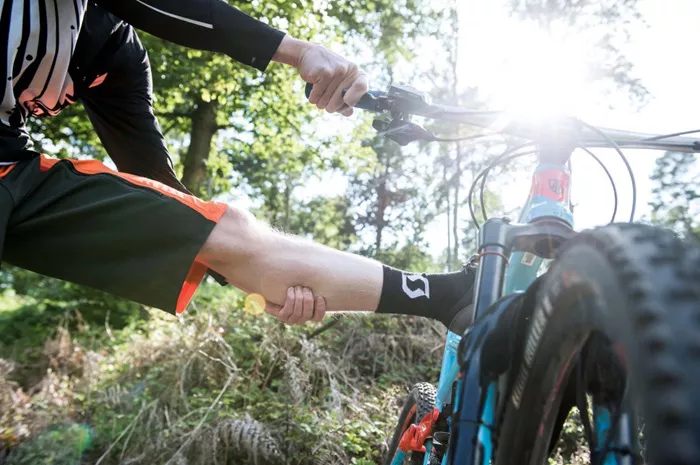Mountain biking is an exhilarating sport that demands considerable leg strength and endurance. Strong legs are essential for climbing steep hills, maintaining speed on flat terrain, and handling the rigors of rough trails.
This article explores various methods to enhance leg strength specifically for mountain biking, ensuring that riders can tackle challenges with greater power and efficiency.
Understanding The Importance of Leg Strength in Mountain Biking
Leg strength is crucial for several reasons:
Power Generation: Strong legs enable cyclists to generate more power during pedaling, which is vital for climbing and sprinting.
Endurance: Enhanced leg strength contributes to better endurance, allowing riders to maintain performance over longer rides.
Injury Prevention: Strengthening the muscles around the knees and hips helps prevent common injuries associated with mountain biking.
Improved Control: Stronger legs improve balance and control on uneven terrain, enhancing overall riding skills.
Key Muscle Groups Involved in Mountain Biking
When focusing on leg strength for mountain biking, it’s important to target specific muscle groups:
Quadriceps: These muscles are primarily responsible for extending the knee during pedaling.
Hamstrings: They play a crucial role in bending the knee and stabilizing the leg.
Glutes: The gluteal muscles contribute significantly to power during climbs and sprints.
Calves: Strong calves aid in pedal efficiency and stability.
Methods to Enhance Leg Strength for Mountain Biking
Here are detailed methods to enhance leg strength tailored for mountain biking:
1. Strength Training Exercises
Incorporating strength training into your routine is vital. Here are some effective exercises:
Squats: Traditional squats target the quads and glutes. To perform:
Stand with feet shoulder-width apart.
Lower your body as if sitting back into a chair, keeping your chest up.
Return to standing. Aim for 3 sets of 15-20 reps.
Deadlifts: This exercise strengthens both the hamstrings and glutes.
Stand with feet hip-width apart, holding a barbell or dumbbells in front.
Bend at the hips and knees, lowering the weights while keeping your back straight.
Return to standing. Perform 3 sets of 10-15 reps.
Lunges: Lunges enhance single-leg strength, which is crucial for biking.
Step forward with one leg, lowering your hips until both knees are bent at about a 90-degree angle.
Push back to starting position and switch legs. Do 3 sets of 10-15 reps per leg.
2. Plyometric Exercises
Plyometric exercises improve explosive power, beneficial for quick bursts of speed on trails:
Box Jumps:
Stand in front of a sturdy box or platform.
Jump onto the box with both feet, landing softly.
Step down and repeat for 3 sets of 10 reps.
Jump Squats:
Perform a squat and jump explosively at the top of the movement.
Land softly and go directly into the next squat. Aim for 3 sets of 10-15 reps.
3. Cycling-Specific Drills
Incorporating specific cycling drills can further enhance leg strength:
Hill Climbing:
Regularly ride uphill to engage your quads and hamstrings more intensely.
Focus on maintaining a steady cadence while climbing.
Sprinting Intervals:
Incorporate short sprints into your rides by alternating between high-intensity bursts and recovery periods.
This helps build muscle endurance and power.
4. Core Strengthening
A strong core supports leg strength by providing stability during rides:
Planks:
Hold a plank position on your forearms or hands for as long as possible (aim for at least 30 seconds).
Perform three sets.
Russian Twists:
Sit on the ground with knees bent, lean back slightly, and twist your torso side to side while holding a weight or medicine ball.
Aim for three sets of 15 twists per side.
5. Flexibility and Mobility Work
Improving flexibility can enhance performance and reduce injury risk:
Dynamic Stretching:
Incorporate dynamic stretches such as leg swings before rides to warm up muscles.
Yoga or Pilates:
Regular sessions can improve flexibility, core strength, and overall body awareness.
Sample Weekly Training Plan
To effectively integrate these methods into your routine, consider this sample weekly training plan:
| Day | Activity |
| Monday | Strength training (squats, lunges) |
| Tuesday | Cycling (hill repeats) |
| Wednesday | Core workout (planks, Russian twists) |
| Thursday | Plyometric training (box jumps) |
| Friday | Rest or light cycling |
| Saturday | Long ride (focus on endurance) |
| Sunday | Flexibility training (yoga session) |
Conclusion
Enhancing leg strength is essential for mountain bikers seeking improved performance on trails. By incorporating targeted strength training exercises, plyometrics, cycling-specific drills, core strengthening routines, and flexibility work into your training regimen, you can develop stronger legs that will help you tackle any mountain biking challenge with confidence. Consistency in training will lead to significant improvements in power, endurance, and overall riding experience.
Related topics:
- When Does Whistler Open for Mountain Biking?
- What Should I Wear Mountain Biking?
- What Muscles Do You Use When Mountain Biking?

